Disclosure: This article contains affiliate links. We may earn a commission from purchases at no extra cost to you, which helps our travel content.
The sun was just beginning to dip below the horizon, painting the savanna in shades of amber and gold that mirrored my own wide eyes, when I found myself mere feet away from a white rhino and her calf. There's something profoundly humbling about these encounters—moments when the world's natural order reveals itself without filters or barriers. This wasn't my first adventure in Africa, but Gweru, Zimbabwe's third-largest city and the gateway to some of southern Africa's most authentic wildlife experiences, offers something uniquely transformative. As someone who spends her days navigating the complexities of our justice system, the raw simplicity of these wild spaces provides both contrast and clarity. Over one remarkable week, my friends and I discovered that Gweru isn't just a safari destination—it's an immersive classroom where adventure and education collide in the most extraordinary ways. Whether you're tracking predators at dawn, walking alongside giraffes, or feeling your heart pound during adrenaline activities, Gweru's offerings transcend the typical luxury safari experience.
Antelope Park: Where Conservation Meets Adventure
My journey into Gweru's wild heart began at Antelope Park, a 3,000-acre game reserve that redefines the concept of conservation tourism. While many luxury safari experiences keep you safely distanced in vehicles, Antelope Park invites you into direct, meaningful engagement with wildlife—particularly their renowned lion conservation program.
The ALERT (African Lion & Environmental Research Trust) initiative here isn't just about viewing lions; it's about understanding the complex challenges facing Africa's lion populations. As someone whose professional life revolves around advocating for the vulnerable, I found their approach refreshingly transparent and educational.
Our mornings began with lion walks—yes, actual walks alongside sub-adult lions as they explored their territory. These aren't trained circus animals but part of a carefully managed conservation program. Walking beside these magnificent predators, observing their natural behaviors while trained handlers ensure safety, creates an unparalleled connection to these threatened species.
The accommodations strike that perfect balance between luxury and authenticity. We stayed in riverside lodges with private decks overlooking the water, where hippos would occasionally announce their presence with distinctive grunts. After days filled with adventure, returning to Egyptian cotton sheets and outdoor showers under the stars felt like the right kind of indulgence—one that complements rather than contradicts the wilderness experience.
For capturing these once-in-a-lifetime moments, I relied heavily on my telephoto zoom lens. The versatility allowed me to photograph everything from distant giraffes to close-up portraits of lions without changing lenses in dusty conditions.
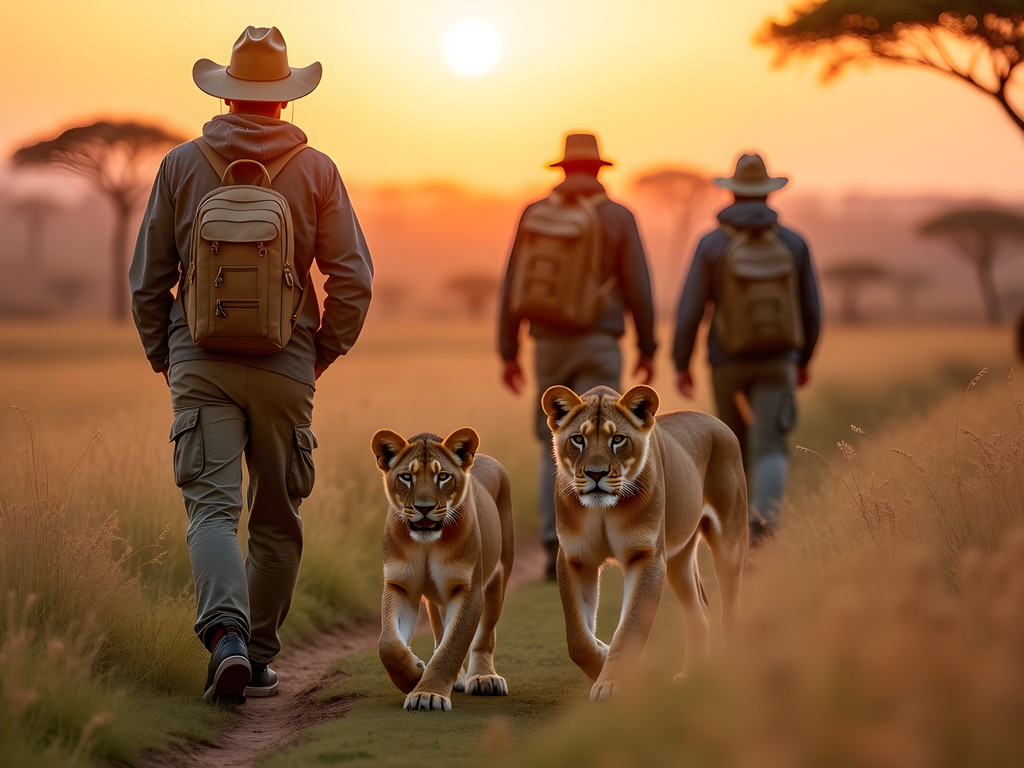
💡 Pro Tips
- Book the sunrise lion walk at least two months in advance—it fills quickly and offers the best lighting for photography
- Pack neutral-colored clothing (beiges, olives, browns) for wildlife activities—bright colors can distract or disturb animals
- Consider the elephant interaction program if traveling with wildlife enthusiasts—it's educational rather than exploitative
Somabhula Nature Reserve: The Art of Tracking
While Antelope Park offers structured wildlife encounters, Somabhula Nature Reserve delivers a more rugged, immersive experience. This lesser-known reserve about 30 minutes from Gweru proper specializes in walking safaris led by some of Zimbabwe's most skilled trackers.
Our guide, Tonderai, represented the fifth generation of trackers in his family. His ability to read the landscape—identifying hours-old leopard prints, interpreting broken twigs, even analyzing dung to determine an animal's health and direction—felt like witnessing a disappearing art form. As someone who analyzes evidence professionally, I was humbled by this different kind of forensic expertise.
"The land speaks if you know how to listen," Tonderai told us as he crouched to examine what looked like undisturbed soil to my untrained eyes but revealed a recent warthog digging to him.
The walking safaris here require reasonable fitness but aren't extreme. We covered about 5-7 miles each morning, moving slowly and deliberately through diverse terrain. The advantage of exploring on foot is multifold: you experience the landscape's subtle changes, encounter smaller creatures often missed from vehicles, and develop a visceral understanding of the ecosystem's interconnectedness.
For these walks, proper footwear is non-negotiable. My hiking boots provided ankle support on uneven terrain while remaining comfortable during long walks. The waterproofing proved essential during early morning treks through dew-covered grass.
Somabhula's luxury tented camp blends seamlessly into the environment while providing unexpected comforts. Solar-powered with limited connectivity, the camp encourages disconnection from digital distractions and reconnection with the natural world—something I find increasingly valuable in our hyperconnected lives.

💡 Pro Tips
- Request Tonderai as your tracking guide if possible—his knowledge of local ecology and tracking skills are unmatched
- Bring binoculars with at least 10x42 magnification for spotting distant wildlife during walking safaris
- Consider a private tracking experience for a more personalized pace and focus on specific wildlife interests
Adrenaline Rush: Gweru's Adventure Activities
Gweru isn't all serene wildlife watching—it also delivers heart-pounding adventure for those seeking an adrenaline fix. After days of patient wildlife observation, we were ready for activities that would accelerate our pulses.
The Zambezi Helicopter Company recently expanded operations to include Gweru, offering dramatic aerial safaris over the region's diverse landscapes. Seeing herds of elephants from above, following river systems that snake through the terrain, and gaining perspective on the vastness of the wilderness adds a completely different dimension to the safari experience.
For water enthusiasts, the Gweru River provides excellent white-water rafting opportunities during the summer months when water levels are optimal. The rapids range from manageable Class II to challenging Class IV, making it suitable for both beginners and experienced rafters. Our guide, Blessing, balanced safety with excitement perfectly, ensuring we hit the most thrilling rapids while maintaining appropriate caution.
"The river teaches us to respect nature's power while enjoying its gifts," Blessing philosophized as we caught our breath between rapids. His perspective resonated with me—there's wisdom in finding joy within carefully managed risk.
Perhaps the most unexpected adventure came from Gweru's emerging mountain biking scene. The Bembezi Trail, developed by local cycling enthusiasts with support from international mountain biking organizations, offers 30+ miles of single-track trails through varied terrain. Riders can encounter wildlife during early morning or late afternoon rides, creating a unique hybrid of safari and sport.
For these activities, especially the water-based adventures, I was grateful for my action camera that captured point-of-view footage while being completely waterproof. The stabilization features meant even the bumpiest rapids resulted in smooth, watchable footage.

💡 Pro Tips
- Book helicopter safaris for early morning when wildlife is most active and visibility is optimal
- Request Blessing specifically for white-water rafting expeditions—his 15+ years of experience make him the safest and most knowledgeable guide
- Rent mountain bikes from Gweru Cycles rather than bringing your own—they're well-maintained and appropriate for local terrain
Cultural Immersion: Beyond Wildlife
While Gweru's natural attractions rightfully take center stage, the region's cultural richness deserves equal attention. As someone who works with diverse communities professionally, I find that understanding local cultural contexts adds essential dimension to travel experiences.
The Midlands Black Rhino Conservancy, beyond its conservation work, partners with local Shona communities to preserve traditional knowledge and craftsmanship. Their community tours introduce visitors to local artisans creating intricate stone sculptures—Zimbabwe's most renowned art form. What makes this experience special is its authenticity; these aren't performances staged for tourists but genuine opportunities to witness living traditions.
I spent a fascinating afternoon with Master Sculptor Taurai, whose family has worked with serpentine stone for generations. His explanation of how each stone "speaks" to him before he begins carving revealed a spiritual dimension to this craft that transcends mere artistry. When he placed a rough stone in my hands and guided me through the initial stages of sculpting, I gained newfound appreciation for the skill involved.
The Gweru Museum offers surprising depth for a provincial institution. Its exhibits on pre-colonial Zimbabwe, the complex colonial period, and independence provide crucial context for understanding contemporary Zimbabwean society. As someone who studies systemic structures professionally, I appreciated their nuanced presentation of how historical forces continue to shape present realities.
Perhaps most memorable was our visit to the Mkoba Township Community Kitchen, where local women have created a cooperative cooking experience. Visitors learn to prepare traditional dishes like sadza (cornmeal staple), muriwo (greens with peanut sauce), and roadrunner chicken stew. The communal cooking and shared meal that follows creates natural space for cultural exchange without contrived performances.
For documenting these experiences, especially in varied lighting conditions, my travel camera proved invaluable. Its compact size meant I could carry it discreetly while its advanced sensor captured vibrant images even in challenging indoor lighting.
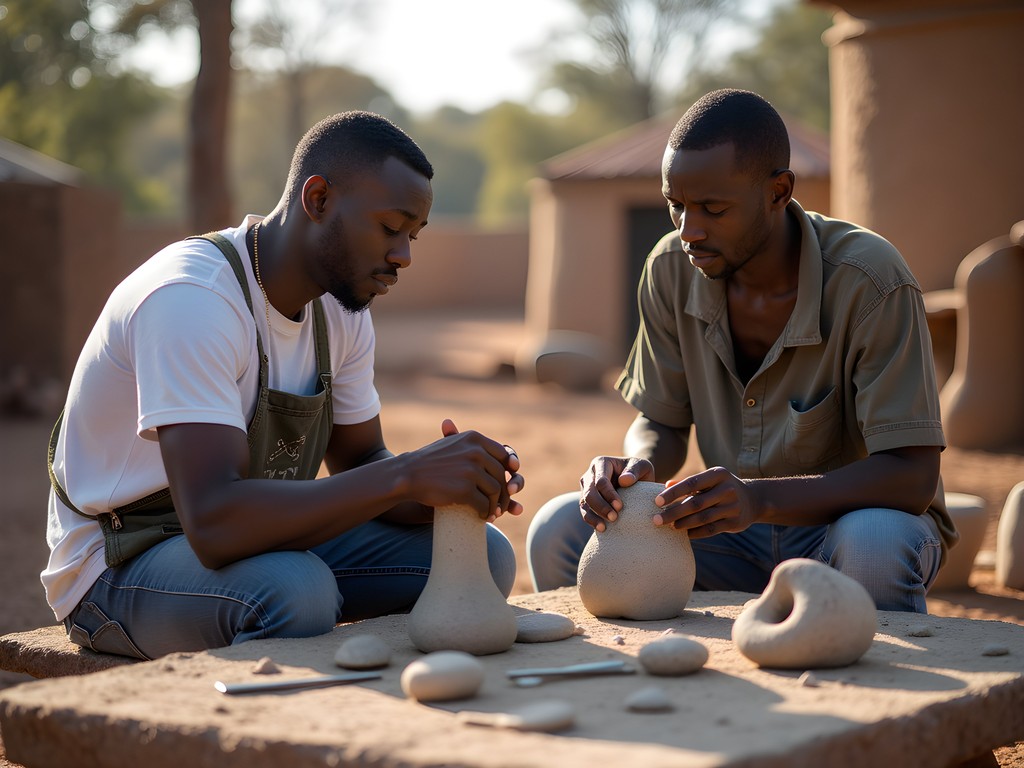
💡 Pro Tips
- Purchase stone sculptures directly from artists at the Midlands Black Rhino Conservancy—prices are fair and proceeds support both conservation and community development
- Visit the Gweru Museum on weekday mornings when local school groups often have guided tours you can join for deeper cultural insights
- Book the Mkoba Township cooking experience at least 3 days in advance and bring small denominations of USD for purchasing ingredients at the local market
Luxury Accommodations: Safari Comforts
After days filled with wildlife encounters and adventures, Gweru's luxury accommodations provide rejuvenating sanctuaries. The region offers several standout properties that balance authentic safari experiences with sophisticated comforts.
Malilangwe Lodge sits at the premium end of the spectrum, offering just six individual suites overlooking a serene waterhole. The architecture incorporates local design elements while providing uncompromising luxury. Each suite features a private plunge pool, indoor and outdoor showers, and expansive viewing decks. What distinguishes Malilangwe is their commitment to sustainability—the entire property runs on solar power, uses recycled water systems, and sources ingredients from their own organic gardens or local producers.
Their farm-to-table dining experience deserves special mention. Chef Tonderai creates innovative menus that blend traditional Zimbabwean flavors with contemporary techniques. Our five-course dinner featuring impala carpaccio, baobab-infused sauces, and indigenous herbs was among the most memorable meals I've experienced anywhere.
For those seeking a more intimate experience, Shamwari Tented Camp offers just four luxury tents spaced for complete privacy. 'Tents' hardly describes these accommodations—canvas walls and ceilings maintain connection to the surrounding nature while enclosing spacious rooms with hardwood floors, king-sized beds, and en-suite bathrooms featuring clawfoot tubs. The absence of permanent structures creates a lighter environmental footprint while sacrificing nothing in comfort.
What elevates both properties beyond their physical amenities is their staff. At Shamwari, our host Blessing anticipated needs before we expressed them, arranged surprise sundowner cocktails at scenic locations, and shared stories that provided cultural context to our experiences. This personalized service transforms luxury from mere comfort to meaningful connection.
For capturing the magical light of African sunsets from these properties, I relied on my travel tripod. Its compact size made it practical to pack while its stability allowed for stunning long-exposure shots of starlit skies and wildlife at waterholes.
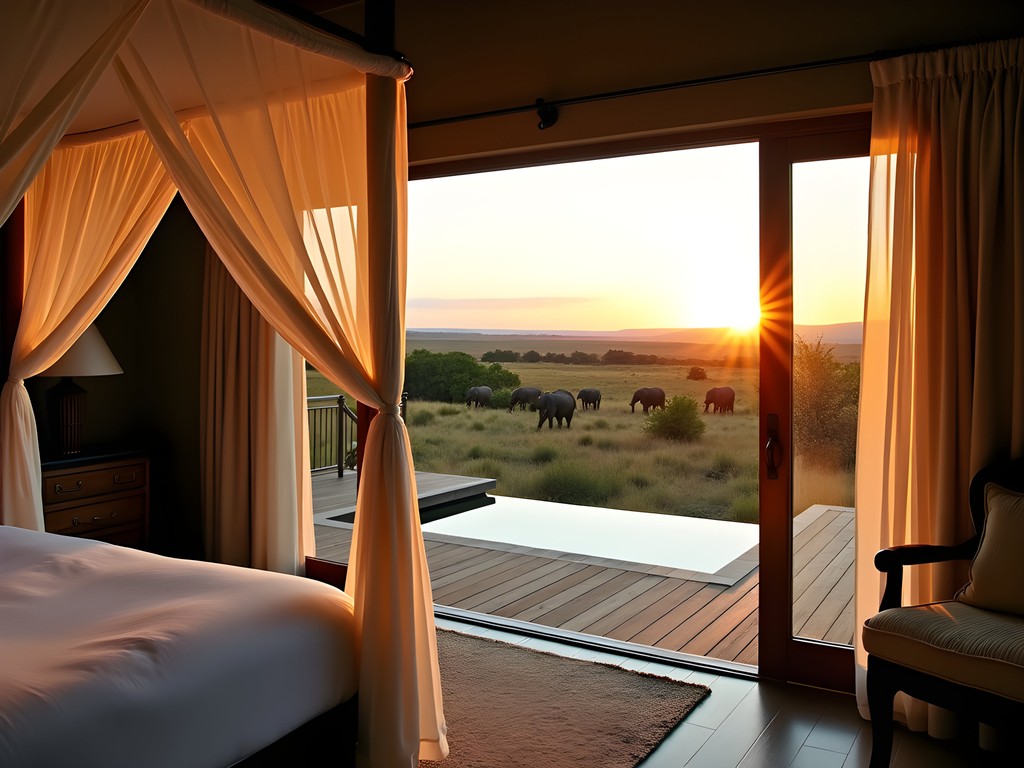
💡 Pro Tips
- Request Room 4 at Malilangwe Lodge—it has the best waterhole views and most private plunge pool
- Book the stargazing dinner at Shamwari at least one night during your stay—the combination of gourmet food under Zimbabwe's remarkable night sky is unforgettable
- Pack a good quality sleep mask as some luxury properties use soft lighting around pathways that may filter into rooms
Final Thoughts
As our small aircraft lifted off from Gweru's airstrip, I pressed my forehead against the window to capture final glimpses of the landscape that had transformed me. Zimbabwe's wild heart had offered so much more than a typical luxury safari—it provided education, adventure, cultural connection, and moments of profound natural wonder. In my work as a public defender, I often witness humanity's complexities and contradictions. Here in Gweru, I found clarity in nature's straightforward truths: the patience of a tracker reading the land, the power of a river carving its path, the ancient wisdom embedded in stone carving traditions. Whether you're seeking wildlife encounters that transcend the ordinary, adrenaline activities that challenge your limits, or cultural experiences that deepen your understanding of this remarkable region, Gweru delivers with authenticity and grace. The luxury accommodations simply provide the perfect framework for processing these transformative experiences. As you plan your own Gweru adventure, remember that the true luxury isn't found in thread counts or amenities, but in those unrepeatable moments when you connect with something larger than yourself.
✨ Key Takeaways
- Gweru offers an ideal balance of authentic wildlife conservation experiences and luxury accommodations
- Walking safaris and tracking provide deeper connection to the ecosystem than traditional vehicle-based game drives
- Combining wildlife viewing with adrenaline activities creates a more dynamic safari experience
- Cultural experiences with local communities add essential context and depth to wildlife adventures
📋 Practical Information
Best Time to Visit
May through September (dry season)
Budget Estimate
$5,000-8,000 per person for 7 days (all-inclusive luxury)
Recommended Duration
6-8 days
Difficulty Level
Moderate


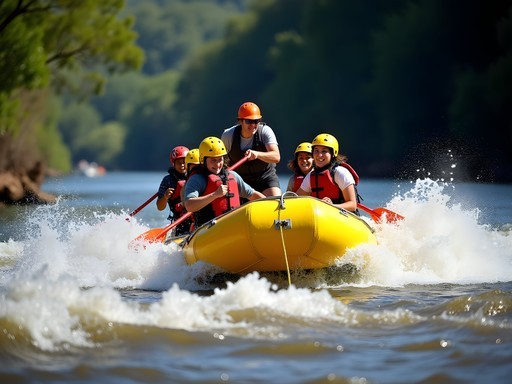

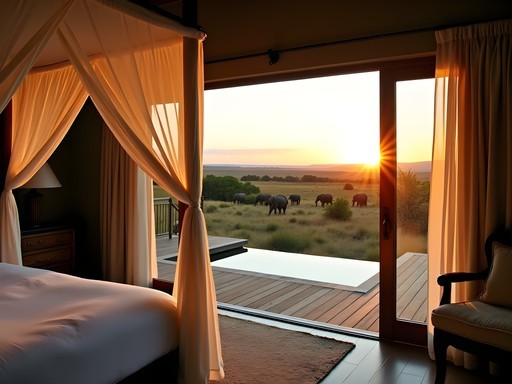


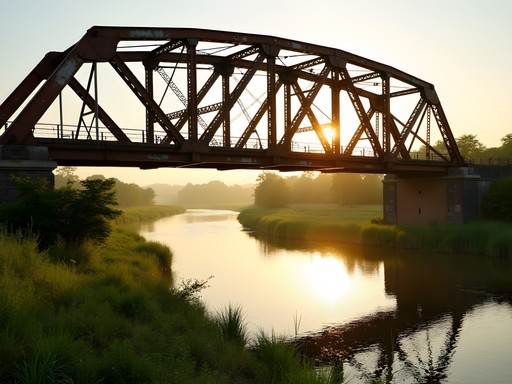
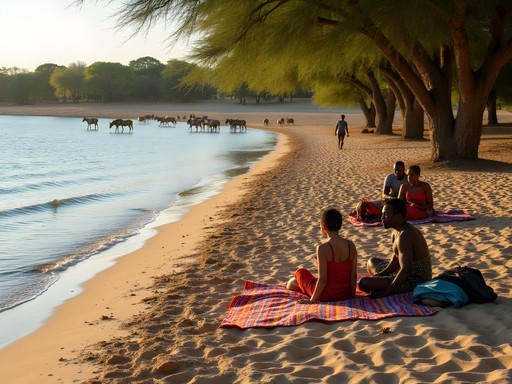






Comments
freeguy
Just got back from Zimbabwe and Gweru was the highlight! Quick tip for anyone going: the tracking experience at Somabhula is way better in the early morning when the animal trails are fresh. We did both morning and afternoon sessions and saw 3x more wildlife in the morning. Also, don't miss the zipline course Savannah mentioned - terrifying but amazing views!
Savannah Torres
Great point about the morning tracking! I should have emphasized that more. Did you try the local sadza at any of the restaurants in town?
freeguy
Yes! Had it with the peanut stew at that place you recommended. So good I went back twice!
Jennifer Rodriguez
Your tracking experience at Somabhula brought back memories! I visited Gweru last year on a budget trip and was amazed by how accessible these experiences are compared to more touristy safari destinations. The conservation work at Antelope Park is particularly impressive - I spent three days volunteering with their lion rehabilitation program. For budget travelers: the local guesthouses in Gweru town are half the price of staying at the reserves, and most offer transportation to activities. The cultural immersion opportunities you mentioned are also underrated - the traditional cooking class I took was one of my trip highlights.
freeguy
Did you feel safe staying in town vs. at the reserves? Planning a solo trip and trying to decide.
Jennifer Rodriguez
Absolutely! Gweru felt very safe, even as a solo female traveler. I stayed at Antelope Park for one splurge night, then moved to Chapungu Guesthouse in town. The guesthouse arranged all my transportation to activities. Just book accommodation in advance - the good budget places fill up quickly!
hikingchamp
That rhino encounter sounds incredible! Did you do any night drives at Antelope Park? Heading to Zimbabwe in November and trying to decide if they're worth the extra cost.
Savannah Torres
Absolutely worth it! The night drives at Antelope Park were magical - we spotted servals, bush babies, and even a leopard! November is perfect timing too - right before rainy season when wildlife congregates near water sources.
hikingchamp
Thanks so much! Adding it to my itinerary right now. Did you bring a special camera for night photography?
Savannah Torres
I used my mirrorless camera with a fast lens. The guides are super accommodating about positioning the vehicle for photos!
wanderlustqueen
Just got back from Zimbabwe last month and spent 3 days in Gweru after reading this post! Savannah, your description of the sunset over the savanna was spot on - pure magic! We did the walking safari at Somabhula and our guide spotted a leopard in a tree that none of us would have seen without him. The tracking skills these guides have are mind-blowing! Also did the zip line adventure you mentioned and nearly died (of excitement lol). One tip for anyone going - the roads to some of the reserves can be pretty bumpy, so if you're renting a car, get one with decent clearance. Thanks for inspiring this part of our trip - it ended up being the highlight!
Savannah Torres
This makes me so happy to hear! A leopard sighting is incredible - you got lucky! And yes, good point about the roads. So glad the post helped with your planning!
smartadventurer
Wanderlustqueen - how many days would you recommend staying in Gweru? Planning my trip now!
wanderlustqueen
I'd say minimum 3 days, but 4-5 is ideal if you want to do both parks and some of the adventure activities without rushing. The sunset horseback safari alone is worth an extra day!
Gregory Boyd
Fascinating write-up on Gweru, Savannah. I visited Antelope Park last year and was equally impressed by their conservation efforts. The lion rehabilitation program is truly one of Africa's most important initiatives, though it raises interesting questions about wildlife management ethics. I found the tracking lessons at Somabhula particularly educational - our guide could read the landscape like a book. Did you try the night drives? We spotted several servals and a shy aardvark, which apparently is quite rare. For anyone planning to visit, I'd recommend bringing a good pair of binoculars as some of the more elusive species keep their distance. Also worth noting that the cultural visits to local villages aren't just tourist setups - they're genuine community engagement programs where proceeds go directly to education projects.
Savannah Torres
Thanks for the thoughtful comment, Gregory! I did do a night drive and saw a serval too, but no aardvark - that's amazing! Completely agree about the cultural visits - I was impressed by how authentic and respectful they were. The conservation work is definitely the highlight though.
islandbuddy
This looks amazing! How difficult was it to get to Gweru? And did you need special permits for the safari activities?
Savannah Torres
Getting to Gweru is pretty straightforward! I flew into Harare and then took a 3-hour drive. No special permits needed for the safaris, just book through the lodges. The lion encounter at Antelope Park does get booked up quickly though!
islandbuddy
That's super helpful, thanks! Planning a trip for next year and definitely adding this to the itinerary.
smartadventurer
Omg those rhino photos are INCREDIBLE! I can't believe you got that close! Definitely adding Gweru to my bucket list now.
Savannah Torres
Thanks so much! The guides at Antelope Park are amazing at getting you close to wildlife while keeping everyone safe. Definitely worth the trip!
backpackphotographer
YESSSS!!! Gweru is such an underrated gem! I was there in September and completely agree about Somabhula - the tracking experience was mind-blowing. Did you get to meet the anti-poaching team? Those guys are absolute heroes. Your photos capture the magic perfectly - what camera setup were you using?
Savannah Torres
I did meet them! Such dedicated people doing incredibly important work. I was shooting with a Sony A7IV and mostly the 100-400mm G Master for wildlife. The rhino shots were actually taken with a 24-70mm because they were so close!
backpackphotographer
That explains the gorgeous quality! I need to upgrade my gear before my next safari for sure.
Riley Griffin
What a fantastic write-up, Savannah! We took our kids (11 and 14) to Gweru last summer, and they still talk about it constantly. The conservation efforts at Antelope Park made such an impression on them. Our guide, Tendai, was incredible with the children, turning every moment into an educational opportunity without it feeling like a lecture. One tip for families considering this trip - we found our wildlife viewing binoculars absolutely essential, especially for the kids who were thrilled to spot animals in the distance before the adults! The cultural immersion part you mentioned was also a highlight - we spent an evening with a local family learning to cook sadza, and my daughter still makes it at home sometimes. Did you get to try the local food markets in town?
Savannah Torres
Thanks Riley! I love that your kids connected so deeply with the conservation aspects. And yes! The food markets were incredible - I became slightly addicted to those fresh mangoes and mapopo candy!
adventureking2041
That sunset photo with the elephants is absolutely epic! Wallpaper material right there.
Venture X
Premium card with 2X miles, $300 travel credit, Priority Pass